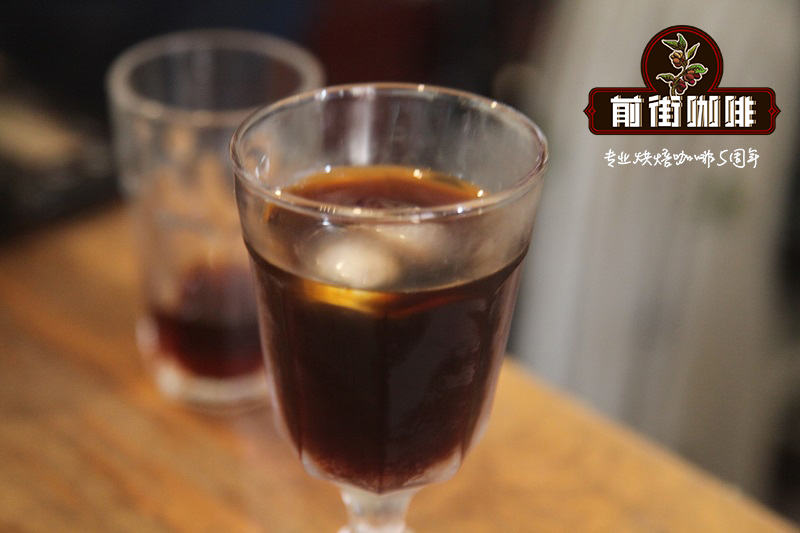Burundian Ngozi Coffee single Bean hand-flushing sharing _ cultivation of Ngozi Coffee in Burundi

Professional coffee knowledge exchange more coffee bean information please follow the coffee workshop (Wechat official account cafe_style)
Burundi is a small landlocked country, located at the intersection of Central and East Africa, and the watershed between the Nile and the Congo River, so it is known as the Heart of Africa. In this country, like most East African coffee-producing countries, there is no conceptual "manor". Instead, small coffee farmers send ripe coffee fruits directly to the government-built small water washing plant CWS (Coffee Wash Station) for unified treatment. The Lujiabao processing plant was built in 1980 with funding from the World Bank. "Rugabo" means "strong man" in the traditional local language.
The coffee washing plant (CWS) in Burundi is managed by SOGESTAL (Societe de Gestion des Stations de Lavage) and has seven treatment plants, including Coprotra, Kayanza, Kirimiro, Muyinga, Mumirwa, Ngozi and Sonicoff. The so-called SOGESTAL is a cooperation model promoted by the Burundian government and coffee workers to help local coffee farmers, provide the equipment they need, improve coffee productivity, and set up washing stations for proper processing of raw beans to produce high-quality coffee while helping local communities develop.
Burundian Coffee Burundi
Burundi, which is located in the interior of Africa, has a land area of only 28000 square kilometers, but 90% of the people with agriculture as the main income, of which coffee is the largest. Coffee industry here, it is no exaggeration to save the lives of most people and lives. Burundian coffee beans are mainly bourbon varieties, growing at a high altitude of 1700-2000m. Kayanza and Ngozi are their main coffee growing areas, mostly grown by small farmers, and then sent to large washing plants.
The Gaichira processing plant is located in Mutumba County, east of Karuji Province, Burundi, with an elevation of 1645 meters. Coffee is grown at an altitude of 1600-1900 meters, with a suitable tropical climate. The harvested cherries will be sent to the washing plant for the first step of washing the unripe beans to ensure that the raw beans are fully ripe, then enter the washing fermentation process, and the plant members will pick out the defective beans before preparing for drying.
At present, the washing plant has a total of 1084 smallholder producers, belonging to 32 groups by the Burundian Coffee Union (Burundi Coffee Alliance), with about 30 farmers in each group, with an average of 429 plants each, led by one farmer. With the assistance of the Alliance, Gasilla has coffee nurseries and agronomists with expertise in coffee production and agriculture, which is sufficient to plan training activities for farmers and help serve as a bridge between the alliance and farmer producers.
Analysis of Burundian Coffee Bean
Hand punch reference
Stew with V60 filter cup, 15 grams of powder and 30 grams of water for 35 seconds, extract at 89-90 degrees Celsius, 1:15, grind small Fuji 3.5 in medium and fine, cut off water in 140ml for the second time, and then slowly inject water until the water drops, the speed is uniform, the water level should not be too high, inject water again until 225ml stops, extraction time 2:00 seconds--
Quickly bring out the attractive aroma of citrus when brewing, and feel the feeling of citrus black tea after the entrance.
END
Important Notice :
前街咖啡 FrontStreet Coffee has moved to new addredd:
FrontStreet Coffee Address: 315,Donghua East Road,GuangZhou
Tel:020 38364473
- Prev

Flavor description of Burundian Ngozi Ngozi Coffee-flavor characteristics of Burundian Ngozi Coffee producing area
For more information on coffee beans, please follow the coffee workshop (Wechat official account cafe_style) tastes: orange peel and Mediterranean citrus acidity, milk chocolate sweetness and silky taste, fresh finish. Burundi is one of the high-quality coffee producing countries. It has high altitude, many hilly areas, volcanic soil, and Rain Water is abundant.
- Next

Recommendations for hand flushing of washed bourbon coffee at AA Cave Manor, Burundi. Introduction to Burundian coffee beans.
Professional coffee knowledge exchange more coffee bean information Please pay attention to Coffee Workshop (Wechat official account cafe_style) Burundi is located in eastern Africa, is a small landlocked country not near the sea, the country's land area is only 28000 square kilometers, but the people with agriculture as the main income is as high as 90%, of which coffee accounts for 80% of agriculture. It is no exaggeration that the coffee industry is here
Related
- Detailed explanation of Jadeite planting Land in Panamanian Jadeite Manor introduction to the grading system of Jadeite competitive bidding, Red bid, Green bid and Rose Summer
- Story of Coffee planting in Brenka region of Costa Rica Stonehenge Manor anaerobic heavy honey treatment of flavor mouth
- What's on the barrel of Blue Mountain Coffee beans?
- Can American coffee also pull flowers? How to use hot American style to pull out a good-looking pattern?
- Can you make a cold extract with coffee beans? What is the right proportion for cold-extracted coffee formula?
- Indonesian PWN Gold Mandrine Coffee Origin Features Flavor How to Chong? Mandolin coffee is American.
- A brief introduction to the flavor characteristics of Brazilian yellow bourbon coffee beans
- What is the effect of different water quality on the flavor of cold-extracted coffee? What kind of water is best for brewing coffee?
- Why do you think of Rose Summer whenever you mention Panamanian coffee?
- Introduction to the characteristics of authentic blue mountain coffee bean producing areas? What is the CIB Coffee Authority in Jamaica?

